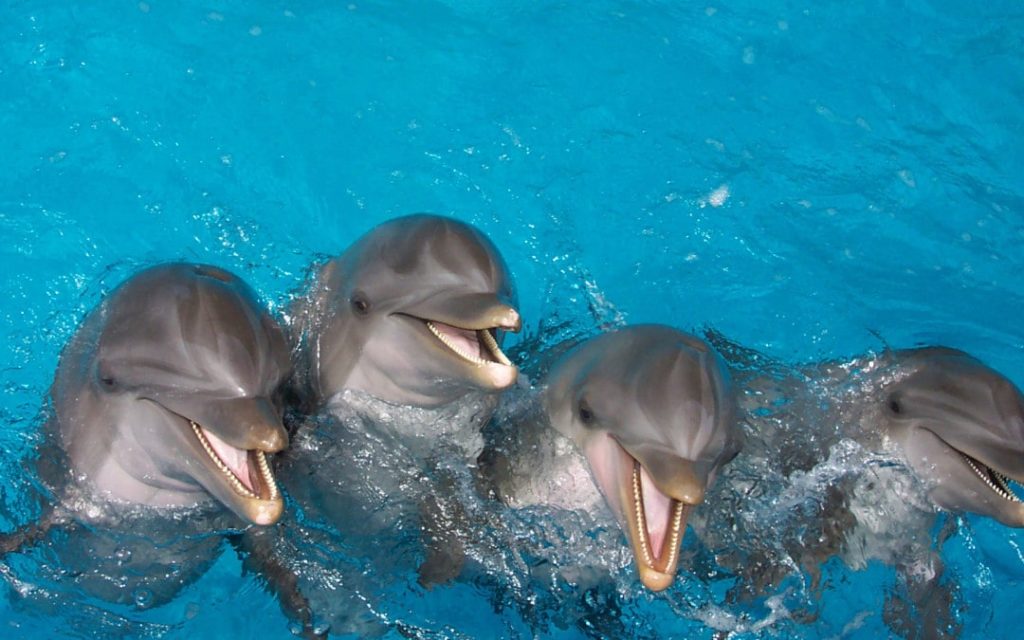Introduction
Dolphins have captured the human imagination for centuries with their playful nature, intelligence, and intriguing underwater acrobatics. These charismatic marine mammals have a unique ability to forge connections with people, making encounters with them an unforgettable experience. In this article, we will dive into the world of Dolphin Discovery exploring the wonders of these remarkable creatures and the various ways humans can interact with them.
The Enigmatic World of Dolphins
Dolphins belong to the family Delphinidae and are known for their streamlined bodies, sleek fins, and captivating personalities. These highly intelligent creatures have fascinated scientists and the public alike with their complex social structures, advanced problem-solving skills, and remarkable communication abilities.
Where to Find Dolphins
Dolphins inhabit oceans and seas worldwide, from the icy waters of the Antarctic to the warm tropical regions. Some of the most popular places to observe dolphins include:
a. Coastal Tours: Many coastal regions offer boat tours that provide a chance to spot dolphins in their natural habitat. Locations like Hawaii, the Maldives, and the Bay of Islands in New Zealand are renowned for these experiences.
b. Marine Parks and Aquariums: Dolphins are often featured in marine parks and aquariums, providing visitors with the opportunity to learn about these animals up close.
Types of Dolphins
There are over 40 different species of dolphins, each with its unique characteristics and behaviors. Some of the most commonly encountered dolphins include the Bottlenose Dolphin, Common Dolphin, and Spinner Dolphin.
Dolphin Behavior
Dolphins are known for their playful antics, such as riding waves, leaping out of the water, and engaging in synchronized swimming. These behaviors serve both social and practical purposes, helping them communicate, hunt, and avoid predators.
Dolphin Intelligence
Dolphins are among the most intelligent animals on Earth. They have large brains relative to their body size and exhibit advanced problem-solving abilities. Their complex communication systems also suggest a high level of cognitive sophistication.
Dolphin Conservation
The well-being of dolphins is a growing concern, as human activities such as habitat destruction, pollution, and bycatch threaten their populations. Many organizations and individuals are actively engaged in dolphin conservation efforts to protect these remarkable creatures.
Swimming with Dolphins
One of the most popular ways to interact with dolphins is through guided swimming experiences. These encounters offer a unique opportunity to get up close and personal with these marine mammals, allowing participants to swim alongside them, touch them, and even receive a friendly dorsal fin ride.
Dolphin-Assisted Therapy
Dolphin-assisted therapy (DAT) is a controversial but widely discussed approach to using dolphins in therapeutic settings. Proponents argue that interactions with dolphins can have therapeutic benefits for individuals with certain medical or psychological conditions.
Dolphin Communication
Dolphins are known for their intricate communication systems, consisting of a wide range of clicks, whistles, and body movements. Researchers believe that these vocalizations play a crucial role in maintaining social bonds, coordinating group activities, and possibly even conveying complex messages.
Dolphin Migration Patterns
Many dolphin species exhibit impressive migration patterns, traveling vast distances between their breeding and feeding grounds. These migrations often take them across international borders, making the conservation of their habitats a global effort.
The Cultural Significance of Dolphins
Dolphins have held a special place in human culture for centuries. They appear in mythology, folklore, and art from various cultures worldwide. For many indigenous communities, dolphins are revered as spiritual beings and symbols of harmony with the natural world.
Dolphin Research and Conservation Organizations
Numerous organizations and research institutions are dedicated to the study and protection of dolphins. These groups conduct research, monitor populations, and advocate for policies that promote the well-being of these marine mammals. Some well-known organizations include the Dolphin Research Center in Florida and the Whale and Dolphin Conservation (WDC) organization.
Responsible Dolphin Encounters
While swimming with dolphins can be an unforgettable experience, it’s essential to prioritize responsible and ethical interactions. Respect for the animals and their natural behaviors should be paramount, and tour operators should adhere to guidelines that protect both dolphins and participants.
The Future of Dolphin Discovery
As our understanding of dolphins continues to evolve, new discoveries about their behavior, intelligence, and social structures are likely to emerge. Advancements in technology, such as underwater cameras and hydrophones, enable researchers to gain deeper insights into the hidden world of dolphins.
Inspiring Conservation
Dolphin discovery experiences have the power to inspire individuals to become passionate advocates for marine conservation. Many people who have encountered dolphins firsthand develop a stronger connection to the marine environment and are motivated to support efforts aimed at preserving the world’s oceans.
Dolphin-Whale Interaction
In some areas, dolphins are known to interact with other marine species, including whales. Instances of dolphins riding the bow waves created by large whales have been documented, showcasing the fascinating interplay between different oceanic creatures. These interactions provide valuable insights into the social dynamics and behaviors of dolphins.
Dolphin Research and Technology
Advancements in technology have revolutionized our ability to study dolphins. Underwater drones, satellite tracking devices, and bioacoustic research tools have allowed scientists to collect data more efficiently and conduct non-invasive studies on these animals. These innovations contribute to a deeper understanding of their behaviors, migrations, and habitats.
The Role of Dolphins in Marine Ecosystems
Dolphins play a significant role in marine ecosystems as top predators. Their presence helps maintain the balance of the food chain by regulating the populations of their prey species, such as fish and squid. Understanding the ecological importance of dolphins is crucial for marine conservation efforts.
Dolphin Art and Literature
Dolphins have inspired countless works of art, literature, and music. Their graceful movements, playful behaviors, and mystique have been captured in paintings, sculptures, novels, and even films. The enduring fascination with dolphins in the arts reflects their enduring place in human culture.
Ethical Considerations
The popularity of dolphin encounters and marine parks has raised ethical questions about the treatment and welfare of captive dolphins. Many individuals and organizations advocate for stricter regulations and the phasing out of dolphin shows, emphasizing the importance of preserving the animals’ natural behaviors and habitats.
Conclusion
Dolphin discovery is a multifaceted journey that encompasses science, conservation, culture, and ethics. These enigmatic marine mammals continue to captivate our imaginations, offering endless opportunities for exploration and learning. As we delve deeper into the world of dolphins, it becomes increasingly evident that their well-being and conservation are intertwined with our own responsibility to protect the oceans and the incredible diversity of life they support. Dolphin discovery reminds us of the wonders of the natural world and our collective duty to safeguard it for future generations.





